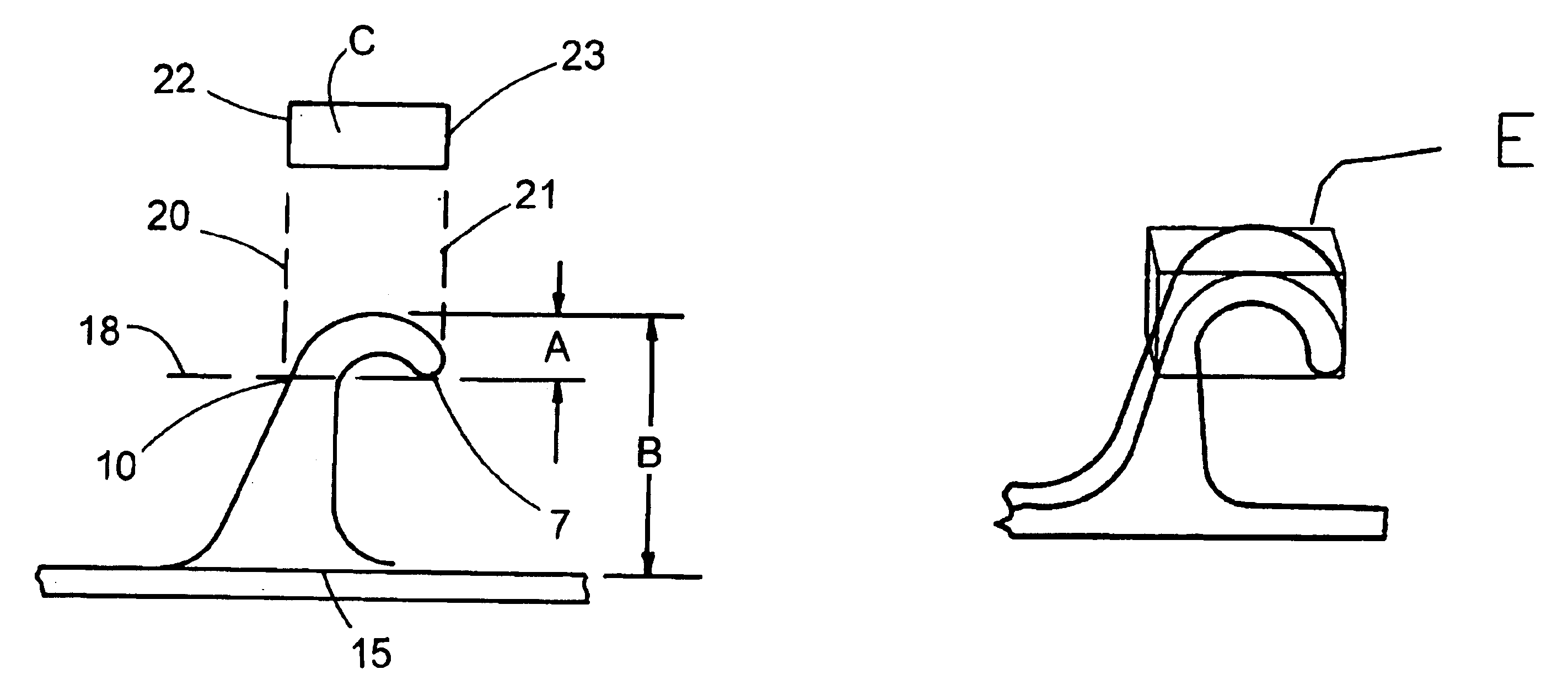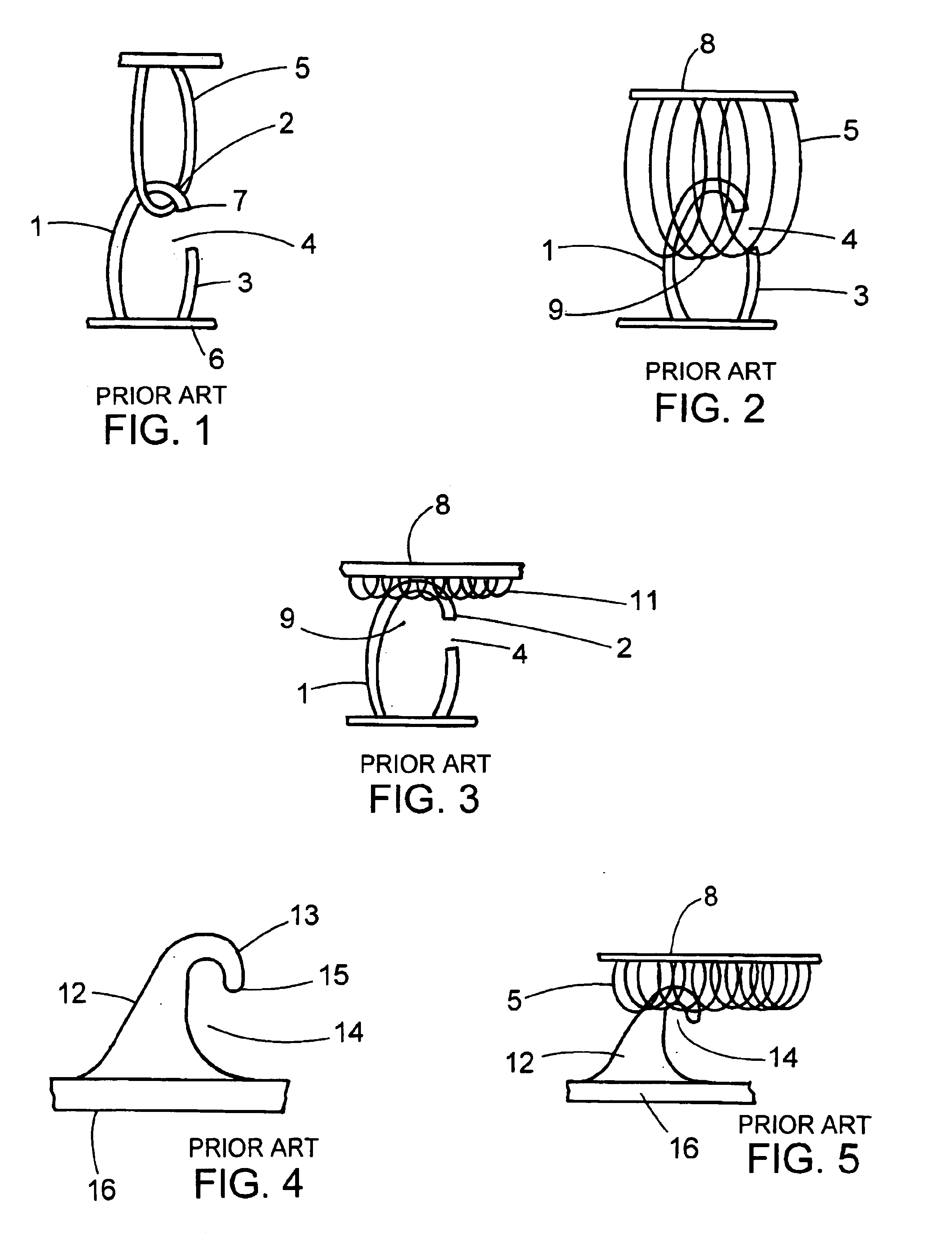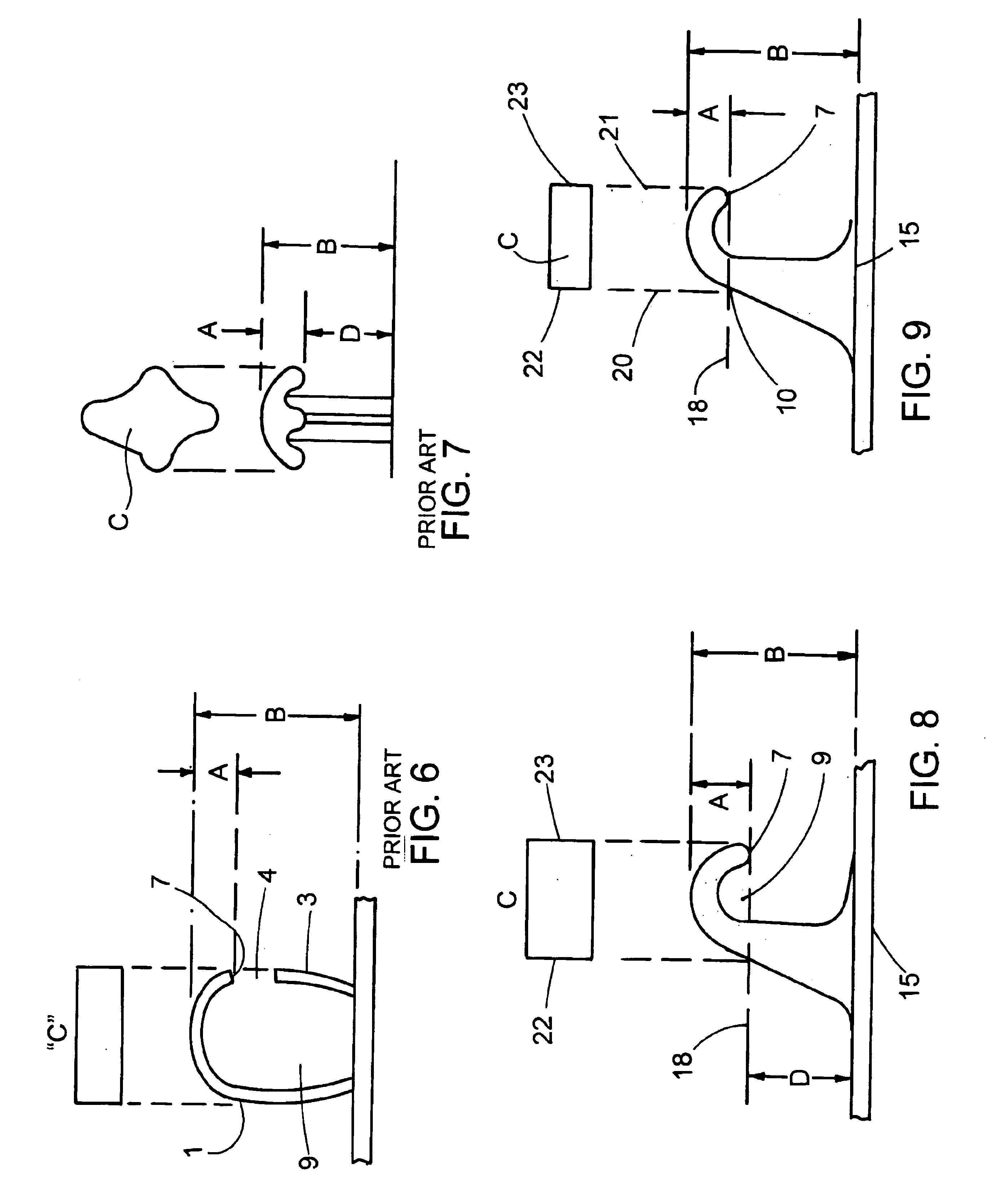Hook for hook and loop fasteners
a technology of hooks and loops, applied in the field of improved hooks for hooks and loops, can solve the problems of many other prior art hooks, insufficient displacement volume calculation, and inability to function effectively with very low profile loops, and achieve the effect of enhancing the performance of such hooks
- Summary
- Abstract
- Description
- Claims
- Application Information
AI Technical Summary
Benefits of technology
Problems solved by technology
Method used
Image
Examples
Embodiment Construction
Now referring to FIG. 1, a monofilament (1) strand is bent into a loop shape which is cut along one side of the loop to create the crook(2) of a hook with a residual portion(3) of the monofilament loop separated from the hook end tip(7) of the hook to provide a spaced opening(4) sufficient to permit loop(5) to enter and become entangled within the crook(2). In FIG. 6 the dimension "A" of the hook (1) represents the dimension of the return, or height of the crook, while "B" represents the total height of the hook from its base(6) to the top outside of the crook(2). The rectangle "C" of FIG. 6 represents the footprint of material that penetrates into a loop structure when penetration is just sufficient to position tip (7) below the top of a loop. FIG. 2 illustrates what happens when the hook(1) attempts to penetrate into a mat of loops. The top of the hook, having a footprint as shown in FIG. 6 "C", pushes aside the loops(5) and continues to penetrate into the loop pile until it strik...
PUM
| Property | Measurement | Unit |
|---|---|---|
| height | aaaaa | aaaaa |
| thickness | aaaaa | aaaaa |
| height | aaaaa | aaaaa |
Abstract
Description
Claims
Application Information
 Login to View More
Login to View More - R&D
- Intellectual Property
- Life Sciences
- Materials
- Tech Scout
- Unparalleled Data Quality
- Higher Quality Content
- 60% Fewer Hallucinations
Browse by: Latest US Patents, China's latest patents, Technical Efficacy Thesaurus, Application Domain, Technology Topic, Popular Technical Reports.
© 2025 PatSnap. All rights reserved.Legal|Privacy policy|Modern Slavery Act Transparency Statement|Sitemap|About US| Contact US: help@patsnap.com



